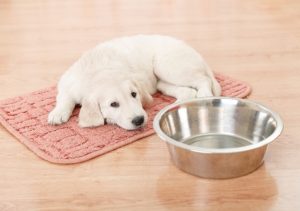Cabbage belongs to the Brassica oleracea, which also has other varieties including broccoli, cauliflower, kales, Brussels sprouts, kohlrabi, gai lan, and collard greens. A head that has dense leaves characterize it.

Its main cultivars include savoy cabbage (has curly or crimped leaves), spring greens (with a loose head), the green (it is light to dark green with a head that is pointed), the red cabbage (with smooth red leaves) as well as a Dutch or white one (that has pale green leaves).
Nutritionally, it has Vitamin K, C, B-6, B-1, B-2, B-3, manganese, fiber, copper, folate, potassium, chlorine, phosphorus, selenium, iron, calcium, proteins, pantothenic acid among others. It is nutritious. It can be eaten in soups, stews, salads, slaws and so on.
Besides being a rich source of vitamin C and K, it may lower cholesterol, blood pressure, and it “may even help lower the risk of certain diseases, improve digestion and combat inflammation” as Healthline notes.
Can rabbits eat it including the savoy and red cabbage
Yes. Rabbits can eat cabbage and any type. This means you can give your bunnies the green, white, spring greens, red, Bok choy (chinses cabbage) and the savoy cabbage. Wabbitwiki.com also lists cabbage including the red, Napa, and savoy as safe. It is safe and non-toxic for your furry friends and RSPCA also allows it as some of the leafy vegetables that bunnies can eat.
However, not everyone agrees on it as My House Rabbit does not recommend this healthy vegetable. This is because if you give your furry critters too many amounts, it can cause bloating, digestive upsets, and gas that can be very painful. We can’t debate the issue since its safety is not in doubt.
If you decide to feed your bunny with this delicious vegetable, we will recommend that you give them in small amounts. Typically, you need to provide them with about a cup of chopped leafy greens per two pounds of your bunny weight.
Secondly, and most importantly, you need to mix it with at least four other leafy greens such as broccoli, parsley, mint, kale, romaine lettuce, spring greens, turnip greens, raspberry leaves, cilantro, among others.
Not that, you need to give them at least five different types of leafy greens. These five types should be what makes up the one cup of chopped leafy greens.
It is important to note something about an ideal rabbit diet. Bunnies are folivores, and their digestive system is designed to digest high fiber low sugar and carb foods. Your bunny needs to get at least 80% hay, some 5% high-quality pellets such as Kaytee Supreme Food for Rabbit and the rest about 10-15% can be fresh foods.
Fresh foods will comprise leafy greens and occasional treats such as non-leafy vegetables (such as celery, squash, bell peppers, carrots, and edible flowers) and fruits (including pears, papayas, mangoes, berries, pineapples, apples, peaches, cherries and so on.
Leafy greens should account for 75% of fresh foods, and you should mix at least five different types of these greens. This way, they are unlikely digestion problems for your furry friends.
How to give bunnies cabbage
As with the case of any other fresh food, it is recommended you provide this vegetable to only pre-weaned rabbits, preferably at least 12 weeks of age. Younger ones might not be able to handle such foods.
Secondly, you need to ensure you thoroughly clean the cabbage to remove any residual herbicides, pesticides or insecticides. Wash it in running water. Organic ones will be recommended.
Thirdly, begin with small quantities and see how their digestive system is going to respond after at least 24 hours. If it does not cause diarrhea, bloating, gas or other intestinal problems including intestinal mobility problems, you can increase the amount but not beyond what we have recommended.
Finally, keep varying the fresh foods (leafy greens and treats) you give your furry friends. This will keep them happy as they enjoy the various tastes and textures of these leafy greens.
Conclusion
Bunnies have a chance to benefit from the various nutrients found in red, savoy, green or white cabbage. However, you should not replace them with your bunnies recommended diets as they do not contain a lot of fibers.
Do not forget to give them clean drinking water. It should be fresh and in unlimited amounts. Water bottles, bowls, and automated rabbit waterers can be helpful while providing them with water.




Leave a Reply
You must be logged in to post a comment.